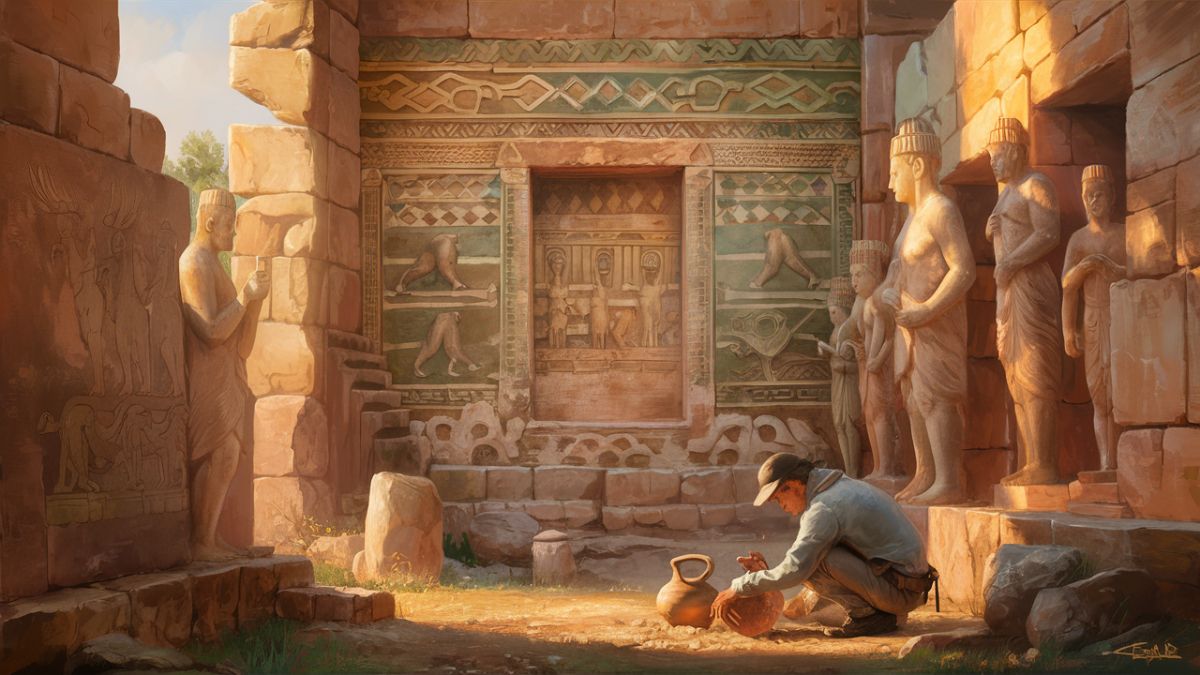Introduction to Ancient Artz
The term “Ancient Artz” encapsulates a diverse range of historical art forms that span thousands of years. From the intricate carvings of early civilizations to the grand frescoes of ancient empires, the study of ancient art provides a profound understanding of our cultural and historical evolution. This article delves into the most significant aspects of ancient art, exploring its various forms, techniques, and the stories they tell about our ancestors.
The Significance of Ancient Artz in Historical Context
Ancient art is not merely about aesthetic appeal but serves as a crucial window into past societies. It reflects the beliefs, practices, and daily life of ancient civilizations. Understanding ancient art allows us to gain insights into the societal structures, religious practices, and technological advancements of bygone eras.
Early Civilizations and Their Artistic Expressions
Mesopotamian Art: Foundations of Civilization
The art of Mesopotamia is among the earliest known, originating in the region between the Tigris and Euphrates rivers. Mesopotamian art is characterized by its use of cuneiform script and bas-reliefs. Artworks from this period often depict religious rituals, historical events, and figures of authority, reflecting the complex social and political structures of early Mesopotamian societies.
Key examples include the Stele of Hammurabi, which features one of the earliest written legal codes, and the Ishtar Gate, renowned for its vibrant blue glaze and intricate reliefs of mythical creatures.
Egyptian Art: Symbolism and Eternity
Ancient Egyptian art is renowned for its symbolic nature and its focus on the afterlife. Egyptian artists adhered to strict conventions that ensured the eternal preservation of their subjects. Art from this civilization includes hieroglyphic inscriptions, statues, and tomb paintings.
One of the most iconic examples is the mask of Tutankhamun, which showcases the Egyptian mastery of goldsmithing and their belief in the divine nature of the pharaohs. Similarly, the Pyramids of Giza and their surrounding tombs reflect the importance of the afterlife and the elaborate burial practices of the time.
Classical Art: Greek and Roman Innovations
Greek Art: The Quest for Idealism
Greek art is celebrated for its pursuit of idealism and naturalism. The Greeks introduced the concept of humanism, emphasizing the beauty and potential of the human form. This is evident in their sculptures, pottery, and architectural achievements.
Notable works include the Discobolus (Discus Thrower) by Myron and the Venus de Milo, which exemplify the Greek focus on proportion and movement. Greek temples, such as the Parthenon in Athens, showcase their architectural innovations and reverence for their gods.
Roman Art: Realism and Practicality
Roman art borrowed heavily from Greek traditions but was marked by its emphasis on realism and practicality. Roman artists were adept at creating busts, mosaics, and frescoes that depicted real individuals and daily life.
The Pantheon in Rome, with its massive dome and oculus, represents Roman engineering prowess. Similarly, Pompeian frescoes provide a vivid glimpse into the domestic life of ancient Romans before the eruption of Mount Vesuvius in 79 AD.
The Artistic Legacy of Ancient Cultures
Asian Art: Diverse Traditions and Techniques
Chinese Art: Harmony and Balance
Chinese art is known for its emphasis on harmony and balance, with a strong focus on landscape painting, calligraphy, and ceramics. Early Chinese art, such as bronze vessels and jade carvings, reflects the importance of ritual and ancestor worship.
The Terracotta Army of Emperor Qin Shi Huang is a monumental example of Chinese art, showcasing an impressive array of life-sized soldiers, horses, and chariots designed to protect the emperor in the afterlife.
Indian Art: Spirituality and Symbolism
Indian art encompasses a wide array of styles and traditions, reflecting the diverse religious and cultural landscape of the subcontinent. Ancient Indian art includes sculptures, paintings, and architecture with strong spiritual and symbolic elements.
The Ajanta and Ellora Caves feature intricate Buddhist murals and carvings that illustrate scenes from the lives of the Buddha and other significant figures. The Temple of Khajuraho is renowned for its elaborate erotic sculptures, which highlight the integration of spirituality and sensuality in Hindu art.
Preservation and Study of Ancient Art
Archaeological Discoveries and Their Impact
The study of ancient art has been greatly enriched by archaeological discoveries. Excavations of ancient cities, tombs, and temples have unearthed invaluable artifacts that provide context and depth to our understanding of historical art forms.
For instance, the discovery of Tutankhamun’s tomb in 1922 provided a wealth of information about Egyptian burial practices and artistry. Similarly, the unearthing of the Minoan frescoes in Knossos has shed light on the art and culture of ancient Crete.
Challenges in Preserving Ancient Art
Preserving ancient art presents numerous challenges, including environmental degradation, vandalism, and theft. Museums and conservationists employ advanced techniques such as digital imaging and restoration practices to safeguard these precious artifacts for future generations.
Conclusion
The study of Ancient Artz reveals a rich tapestry of human creativity and cultural development. From the early carvings of Mesopotamia to the grand temples of Greece and Rome, ancient art provides a profound understanding of our ancestors’ lives and values. By preserving and studying these masterpieces, we gain invaluable insights into the evolution of human civilization and artistic expression.
